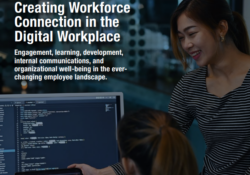In March 2022, the Business Roundtable, a membership organization for company CEOs, published results from its latest quarterly survey of 167 executives. Compared to the previous quarter, the current survey’s three key indices – plans for hiring, plans for spending, and expectations for sales revenue – all decreased significantly amid global uncertainty surrounding the conflict in Ukraine, escalating inflation, and blockages to manufacturing supply chains. Said Mary Barra, CEO of General Motors, “We once again find ourselves in unprecedented times.”
Uncertainty is the bane of business strategic planning. It makes forecasting future returns more difficult and raises the bar against which proposed investments are evaluated. Instead, the approach may be to “do more with less,” seeking out productivity gains, reducing inefficiencies, or doubling down on existing sources of business value. Yet, organizations cannot just stand pat; they must continue to evolve but do so with greater awareness of how to be adaptable as the business environment evolves.
Similarly, workforce planning is designed to mitigate the risks – likelihood, impact – of business disruption due to internal and external driving forces.
Planners collaborate with stakeholders in HR, finance, and operations to align business plans with
current, expected, and desired workforce needs, then recommend interventions that will address the most important gaps. However, if – as the CEO survey found – simply hiring more people is not an option, planners must pivot towards other, often non-traditional solutions.
Given the duality of business uncertainty and pressure to act to mitigate risks, what’s a workforce planner to do?
Build Scenarios That Focus Attention but Permit Flexibility
Innovative business leaders use a plethora of strategic options to hedge against uncertainties, whether within their industry (e.g., disruptive competitors, new technologies) or outside (social, political, economic or – as we are all too aware – health risks.
Similarly, workforce planners are increasingly adept at building scenarios that reduce the likelihood of a scattershot approach to talent management. By grouping common business and HR strategies together, workforce planners can focus interventions on reducing talent risks while retaining the flexibility to pivot should other scenarios prove more likely to be realized.
At IHRIM, we continue to monitor the external environment to understand what continuing education options exist for HR technology practitioners, vendors, consultants, and academics. We are acutely aware of greater competition for your time, engagement, and money, especially from zero-cost providers of information. As discussed in prior articles, IHRIM must continue to evolve in how we execute our mission through the three pillars:
- Play the leading role in advocating for the HR technology profession.
- Create an educational ecosystem that supports the professional journey of our members (by curating native and partner-led education offerings).
- Build a professional community providing recurring, valuable member interactions not easily replicable elsewhere.
We have an aggressive agenda of new education offerings in 2022 but reserve the right to pivot when our “test and learn” approach yields new insights.
Focus on Critical Segments of the Population and Their Unique Characteristics
Access to big data and real-time analysis enables marketing to precisely target consumers with offers that spur purchase behavior. Even if not blessed with a similar quantity of data, workforce planners use segmentation to invest in filling critical roles; examples include:
- Introducing new shift patterns, mentors, and cohort learning for new hire nurses to improve retention.
- Studying mobility patterns of executives and officers to anticipate turnover (characterized as “bright flight”) and build talent pools at each level of succession.
- Emphasizing the recruiting and training of jet fuel analysts, whose competence in forecasting fuel costs has a significant material impact on company spending.
- Redesigning roles and career paths to address historical turnover in “high-risk disciplines” – roles that are difficult to fill, suffer from excessive transfers out or are staffed with a sizable portion of staff approaching retirement.
To improve our member and community segmentation, IHRIM is committed to improving how we solicit, capture, and apply feedback on our programs. For example, in one of our micro-surveys, data illustrated that members join IHRIM primarily for one, or more, of three reasons: to be aware of news and innovations, to participate in learning and sharing of best practices, and to gain professional development. We also look at our membership data to identify segments increasing in size (e.g., vendor SMEs) or those, such as HR business partners, who are becoming more deeply involved in HR technology.
Test and Learn by Placing Small Bets
Several years ago, retailer JC Penney ran a test to see whether men’s shoes would sell better if located with men’s clothing rather than – as was the conventional wisdom prior – in the same section as women’s footwear. Why the original approach? About 80% of store clientele were women who, managers believed, typically buy shoes for their partners. In fact, data from the test showed faster sales when men’s suits and shoes were co-located. A layout change was subsequently instituted across 1,000 stores.
This example is illustrative of a mindset that running tests or small bets can have positive results, even if the hypothesis is not supported – organizations may build institutional knowledge, acquire deeper understanding of customer needs, or eliminate blind spots that hinder future projects.
The Approach to Planning at IHRIM and Our Programs for 2022
Speaking of placing bets, IHRIM’s Board – with input from members and volunteers – prioritized a list of small bets that we wished to launch or expand in 2022. This was not a new concept for IHRIM but one that former Chair Jim Pettit believed to be a wise strategic play for an organization with limited funds.
IHRIM’s Definition of a “Small Bet”
- A net new education program or service offering;
- Adjacent to current offerings, reducing the need for radically new infrastructures;
- Developed with stage-gates – check-point tests to determine the next course of action;
- Using KPIs as an important, but not singular, means to inform decision-making; and,
- Precise, but limited, investment of financial resources and awareness of capacity constraints due to a volunteer Board of Directors.
As IHRIM looks to the future – committing to action and investments but retaining the need for flexibility – our members can expect to hear more about several new and expanded programs, including:
- What sets IHRIM apart from conference organizations or local networks is the recurring, broad, and meaningful connections with HR technology professionals around the world. Over the last 40 years, we have been proud to facilitate relationships that go beyond “add to my network” clicks and, through a new set of communities gatherings, will bring our members together for regular discussions and events.
- IHRIM continues to partner with universities that offer HR technology courses. This is consistent with our mission to develop the next generation of HR leaders and benefits faculty and students by providing resources (WSR, etc.), access to services (HRIP certification, etc.), and to our membership. Recently, we announced a relationship with Loyola University Chicago and are open to exploring partnerships with other institutions.
- In addition to our HRIP certification for mid-career professionals, we are exploring an advanced course on managing HR technology through a merger, acquisition, or divestiture. The timing is perfect – growth in the M&A market coupled with the increasingly complex HR software landscape places greater pressure on HRIT leaders to manage the operational risks associated with combining or dividing people, processes, systems, and data.
- In 2021, IHRIM’s Board decided to establish mentoring as a membership benefit, facilitating formal 1-1 relationships in a sustainable structure that directly benefits HR technology professionals and their employers. Mentors can derive satisfaction from guiding the next generation of leaders, feeling rejuvenated in their own career development, and keeping current on issues and trends impacting our field.
- IHRIM will continue to invest in the Workforce Solutions Review as a mechanism for sharing best practice content and innovative ideas with our membership. In 2022, we plan to bolster the digital offering, publishing articles more frequently, inviting authors to lead “fireside chats”, and encouraging discussions in our SocialLink application.
- Last November, IHRIM delivered the inaugural Introduction to HR Technology course aimed both at individuals from non-HR disciplines seeking to enter the HR technology domain and current HR professionals wishing to deepen their technology expertise. Offered as a six-part program with 1-to-many teaching, small group exercises, quizzes, and homework, the course will be expanded in 2022 through a partnership with Enavrio, an HR technology consulting company.
Thank you for your support of IHRIM. Learn more about these programs register for upcoming events.


